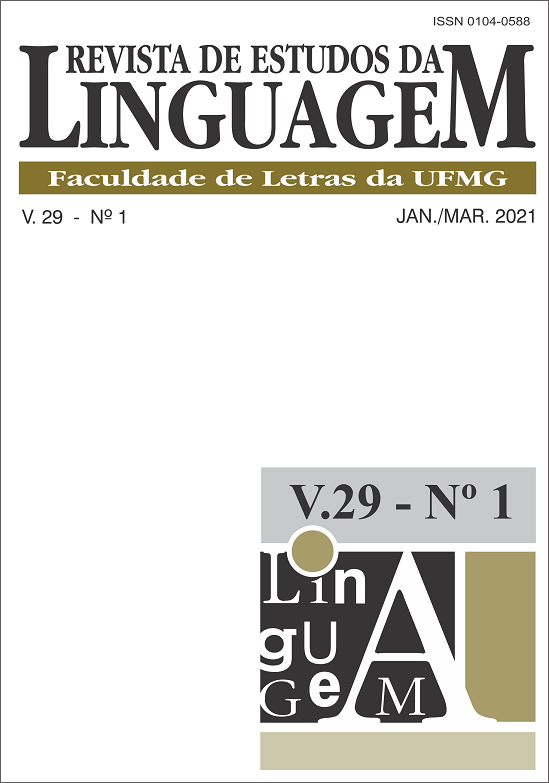A formalização da percepção da vogal baixa nasalizada do espanhol à luz do modelo BiPhon
estudo comparativo de fragmentos das gramáticas de falantes nativos e de brasileiros adquirindo o Espanhol como língua estrangeira
DOI:
https://doi.org/10.17851/2237-2083.29.1.13-48Palavras-chave:
percepção, nasalização vocálica no espanhol, modelo BiPhonResumo
Uma perspectiva formal está no foco deste artigo que visa discutir e representar a percepção da nasalização da vogal /a/ em determinados contextos nasais, fenômeno de alofonia no espanhol, que pode ser fonológico ou alofônico no português. O suporte empírico está em dados de 9 nativos da língua, de Montevidéu, e de 15 brasileiros aprendizes de espanhol como língua estrangeira. Os dados de percepção, aqui aproveitados dos estudos de Brisolara e Matzenauer (2018a, 2018b), foram obtidos em Teste de Identificação, elaborado no software TP (RAUBER et al., 2012). A menor acuidade dos uruguaios na identificação de vogais nasalizadas, em comparação aos brasileiros, atribuída ao caráter estritamente alofônico do fenômeno no espanhol, foi captada e formalizada no Modelo Bidirecional de Processamento e de Gramática - BiPhon (BOERSMA, 2006, 2007; BOERSMA; HAMANN, 2009), que integra a Teoria da Otimidade Estocástica. Como a percepção, segundo o BiPhon, tem o papel de mapear a representação fonética contínua para uma estrutura de superfície fonológica discreta, o fenômeno da percepção da nasalização da vogal /a/ no espanhol foi formalizado de modo que representou, pela interação entre Restrições de Pista e de Estrutura, a diferença da gramática dos brasileiros enquanto aprendizes de espanhol em relação à gramática dos uruguaios: o peso das Restrições de Estrutura *VORALN e *Vnasal foi decisivo na especificação de cada uma das duas gramáticas, sendo que a proximidade dos valores centrais das Restrições de Estrutura e de Pista representou a presença de variação nos dados de percepção tanto de uruguaios, como de brasileiros.





